Nowadays, it seems like everyone is exploring UX design as a new and exciting career. Given the lack of formal education in this area, most people are learning it on the side online or enrolling in an expensive 10k bootcamp. The UX industry has boomed over the past couple of years, with increasing job prospects, and visibility in the tech industry.
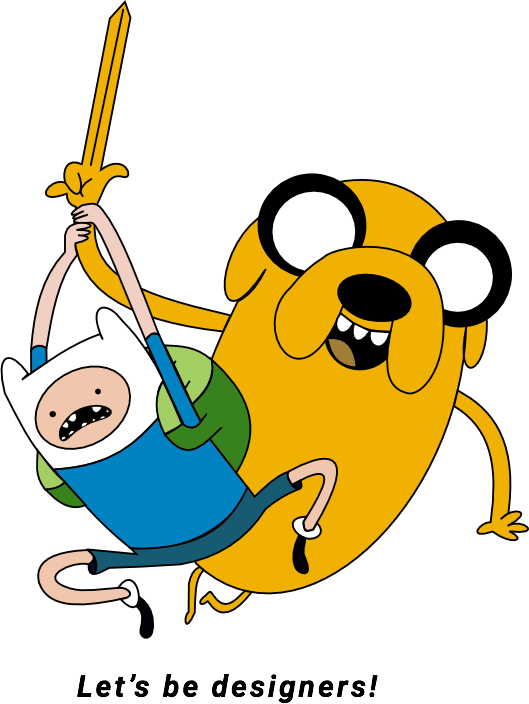
Also on Mediabistro


Most new designers seeking to break into the field have finished a bootcamp, and usually end up with the same resume and portfolio as the other hundred graduates in their cohort. I’m going to talk about how to position yourself for the job you want, and how to leverage your background (no matter what it may be).
In the past, the concept of UX designer or product designer (its current definition) wasn’t super prominent in the industry. Sure, there might’ve been user interface designers, but all these new subdisciplines under the UX design umbrella were unheard of.
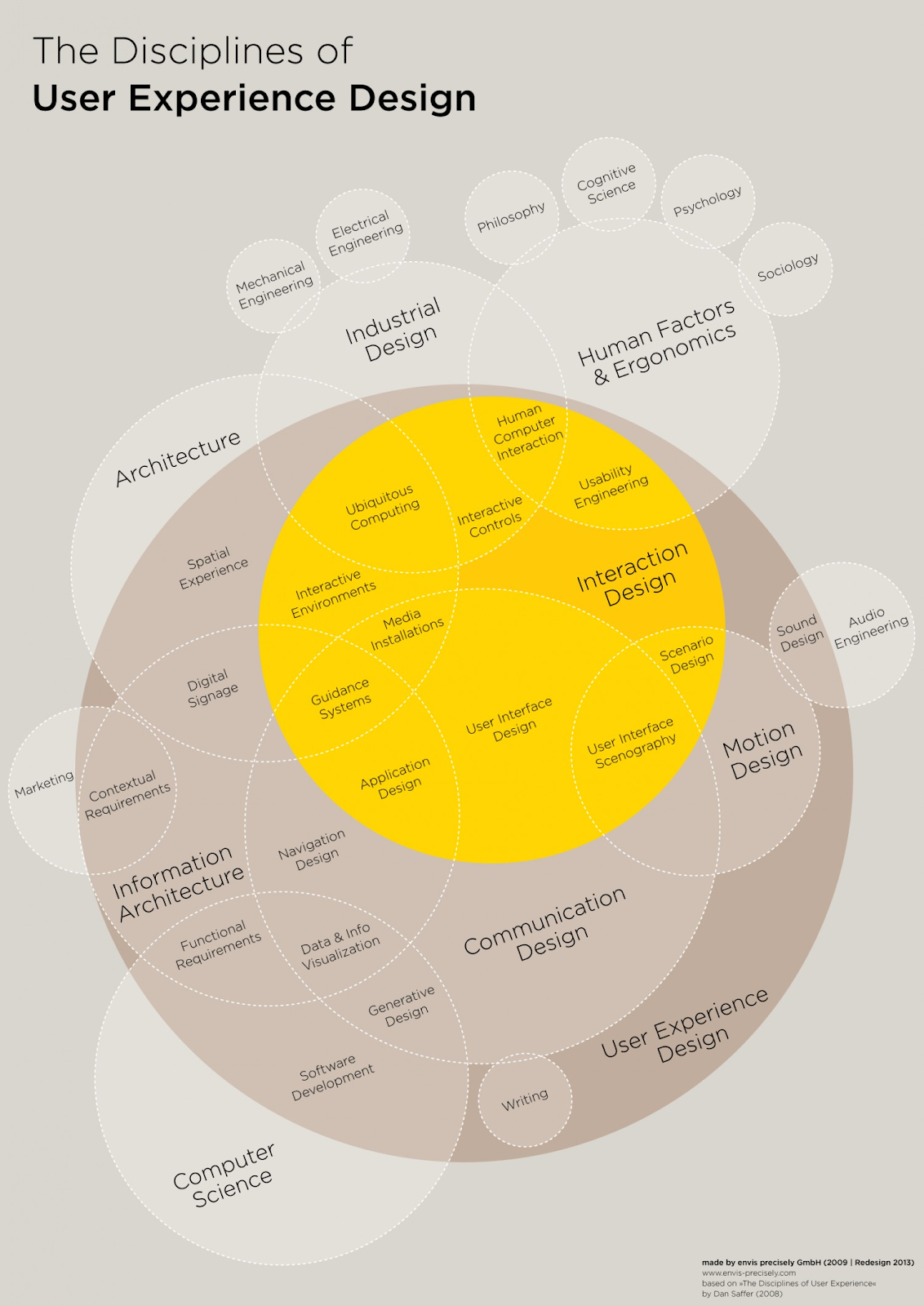
<source>
With the exception of some larger corporations, most UX people don’t have super-defined roles (e.g. visual designer, interaction designer, information architect, user experience researcher). The industry seems to be moving towards generalists who can do a little bit of everything on top of having solid visual and interaction design skills.
This is purely anecdotal, but from my experience and conversations with hiring people, most design jobs’ postings are generic titles like “UX designer” or “Product Designer”, but have different requirements for sub-discipline proficiency. Most job postings for designers will require basic skills in visual and interaction design, as well as proficiency in Sketch, Invision, etc. However, depending on the state of the company, its products, timeline, existing team composition, and the hiring team – there’s a need for people with specific domain knowledge e.g. user research, accessibility, illustration, branding, usability, etc.
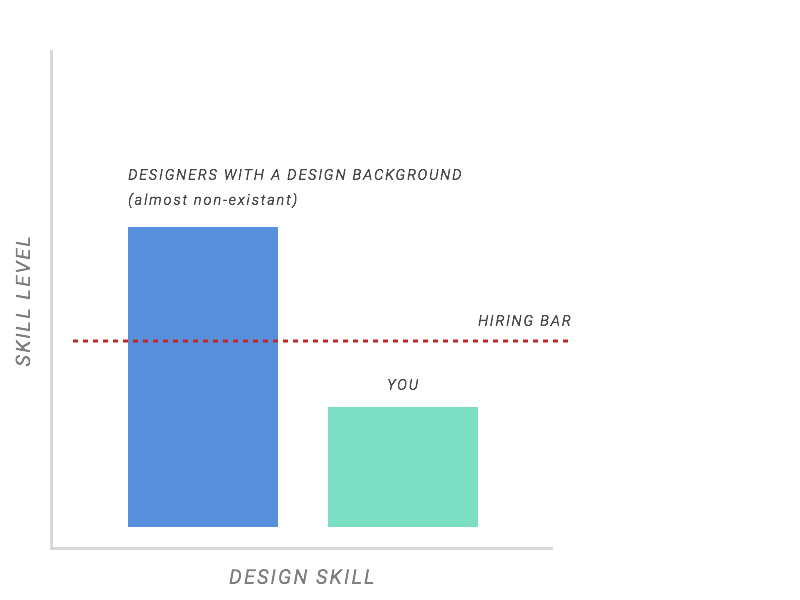
You could get a huge advantage if you determine what sub-disciplines the job posting or company is looking for. Unfortunately in most cases, this is not explicitly obvious in the posting itself. In fact, there’s sometimes a disconnect between talent acquisition and the hiring team, or the hiring team might not even know that they need a specific sub-discipline.
In that case, you need to make the value of your sub-discipline and domain expertise known. For instance, you and probably a hundred other designers are up for a generic product designer role at a local SaaS startup. Their product and landing page is well designed, but you notice that they have inconsistent branding across their properties and appear to be using stock illustrations. Lucky for you, in this scenario not only do you have solid visual and interaction design skills, but you’re also experienced in brand identity and illustration. You could take the proactive approach, spew out some advantages and stats on the value of having a strong brand identity, and talk about how you could help the company fill the gaps with your expertise. This way, you’ve demonstrated additional value and have a leg up above all your peers.
At the end of the day, most companies are looking for the best fit, not the designer with the most years of experience under their belt. Julie wrote an excellent article about hiring for the right fit here.
“There are a thousand shades of nuance when it comes down to any particular scenario. But this may well be an example of the third reason to no-hire a designer: they aren’t a good fit.” – Julie Zhao
Look at the two applicants before, who do you think has a better chance of getting hired…
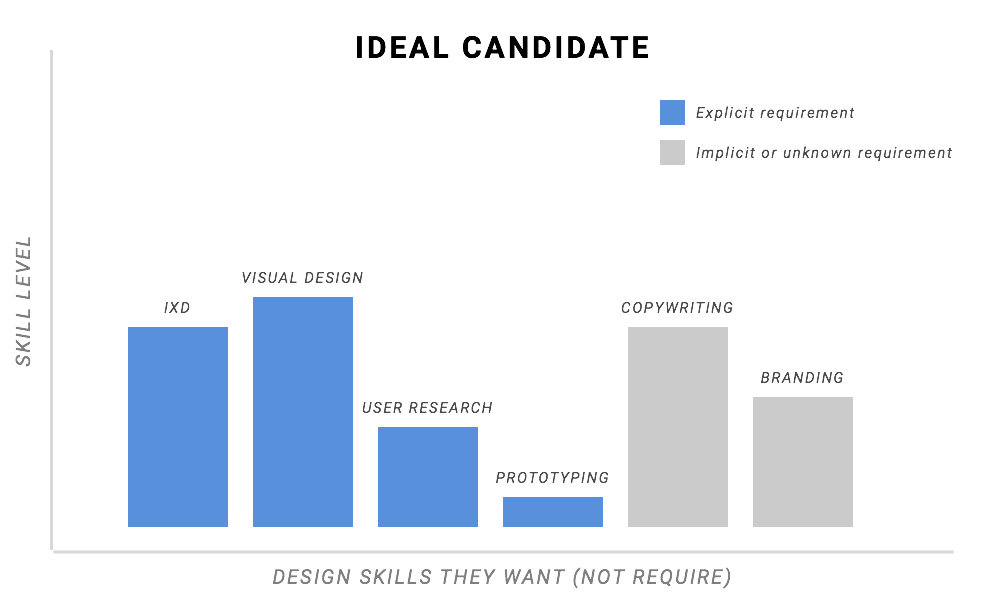
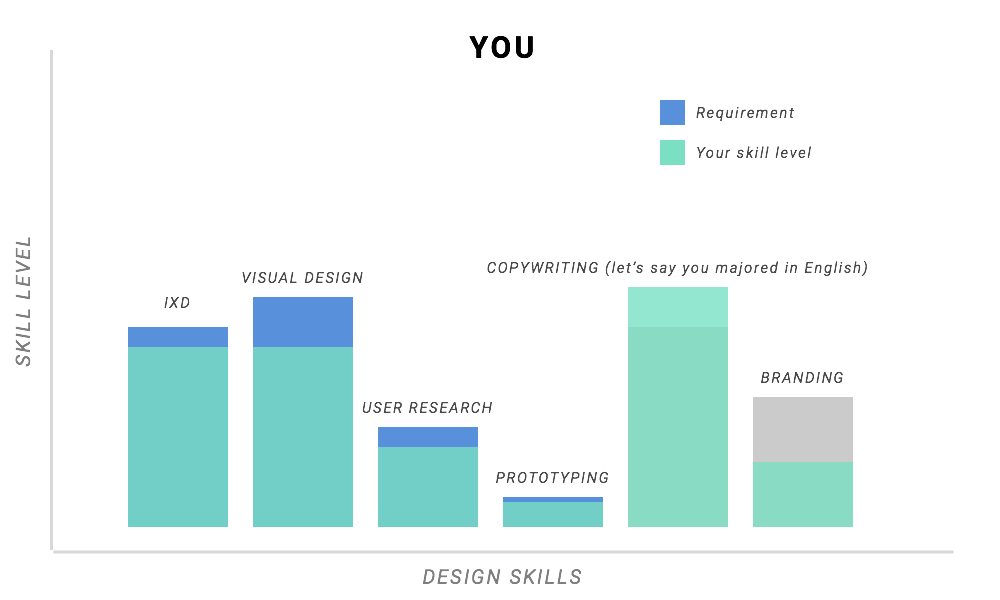
Ok, so if you’re just starting out in the design field, you probably don’t have any domain expertise in any related sub-discipline. But, you must have some sort of background (whether it be academic or professional) that has transferable skills. At the very least your background would have shaped at least one valuable design trait (even if that trait is patience). Heck, I studied Biomechanics, and it has arguably the least relevance to design out of any university degree.
This is just a rough idea of how some common degrees are related to popular design subdisciplines.
| Degree | Related Subdiscipline or Important Skill |
| EnglishComparative literature
Communications |
UX writing or copywriting |
| Almost any science degree | User research (avoiding biases, participants, conducting studies, writing protocols)User testing |
| Computer science, engineering | Communication with developers |
| Psychology (I would love to have a formal background in psychology right about now) | User research and psychologyA lot of cognitive psychology principles have practical applications in design |
| Data or stats | Understanding design-driven metrics, conversion funnels, data vis, etc. |
Of course, you’re not restricted to focusing on a sub-discipline related to your background. Although you’ll have a great foundation and starting point, you should definitely focus on sub-disciplines that interest you (as much as I want to be a great motion designer, I’m convinced After Effects was designed by Satan).
Now, assuming you’ve got a solid visual and interaction design foundation, the last thing to do is apply. Applications can be a stressful process, but it’s definitely something that gets easier with time. Landing the first design job without education or experience boils down to a numbers game (at least when you’re starting out). So many factors could make or break your chances that are outside of your control. Luckily, Wealthfront and Breakout List have compiled a list of excellent companies to work for as a new designer.
- Wealthfront Career Launching Companies List (check out previous years as well)
- Breakout List
- Shameless plug for Shopify’s awesome design jobs
- Also make sure you’re getting paid what you’re worth, don’t get hustled friend
 Richard works as a product designer @SHOPIFY, and helped design and launch Hatchful (www.hatchful.com), a branding assistant designed to help people launch their business. Previously, he was a designer at Sony – PlayStation Video, and cofounder of Beatcamp (www.beat.camp), a e-commerce platform that facilitates the licensing of instrumentals between producers and vocalists.
Richard works as a product designer @SHOPIFY, and helped design and launch Hatchful (www.hatchful.com), a branding assistant designed to help people launch their business. Previously, he was a designer at Sony – PlayStation Video, and cofounder of Beatcamp (www.beat.camp), a e-commerce platform that facilitates the licensing of instrumentals between producers and vocalists.
Follow Richard on Dribbble | Instagram | Medium | Uplabs


.png)



![What is an Elevator Pitch? [And How to Make Yours]](https://www.mediabistro.com/wp-content/uploads/2019/08/daan-stevens-8Q6aHbve5hI-unsplash-1-400x225.jpg)


